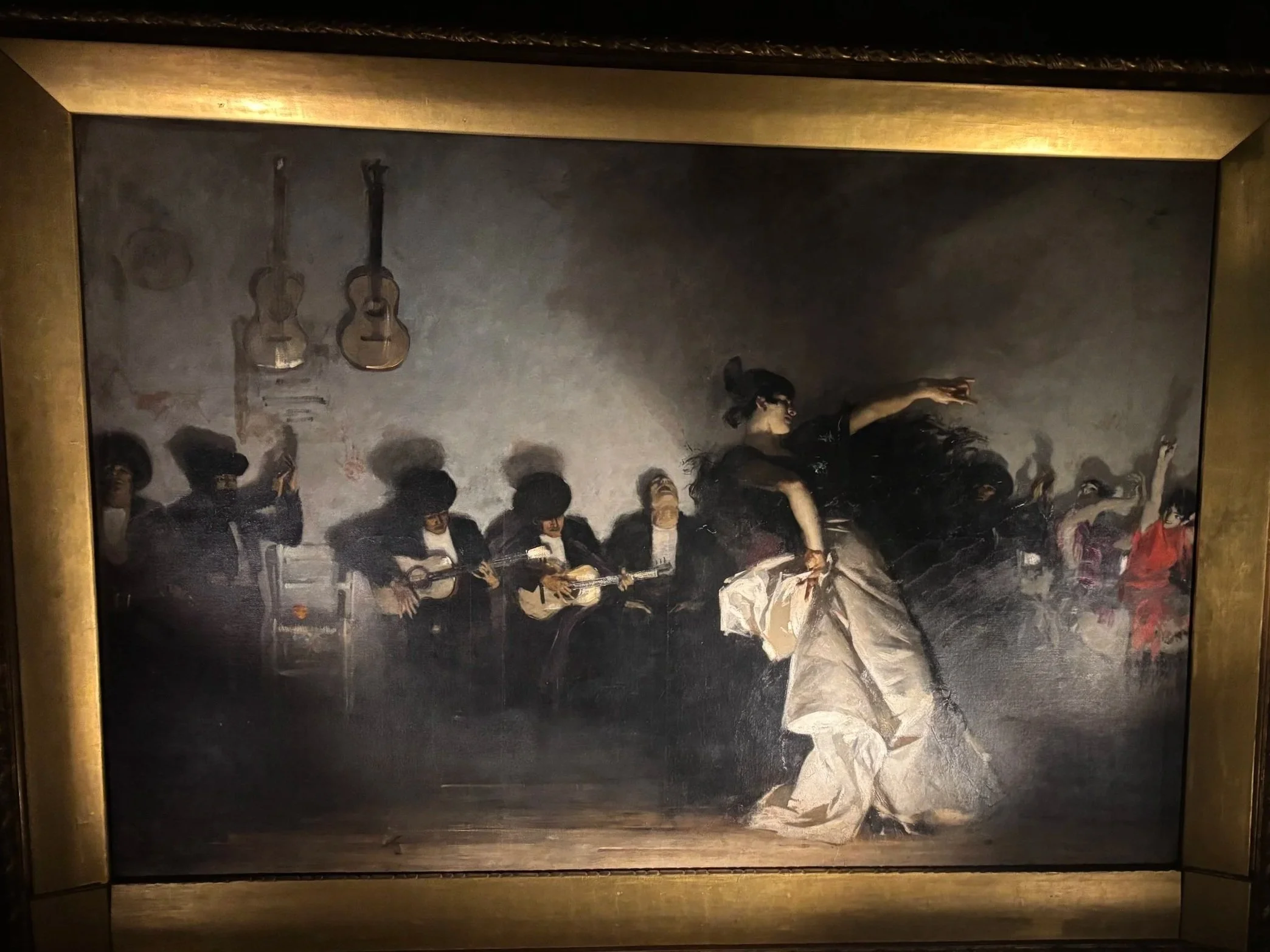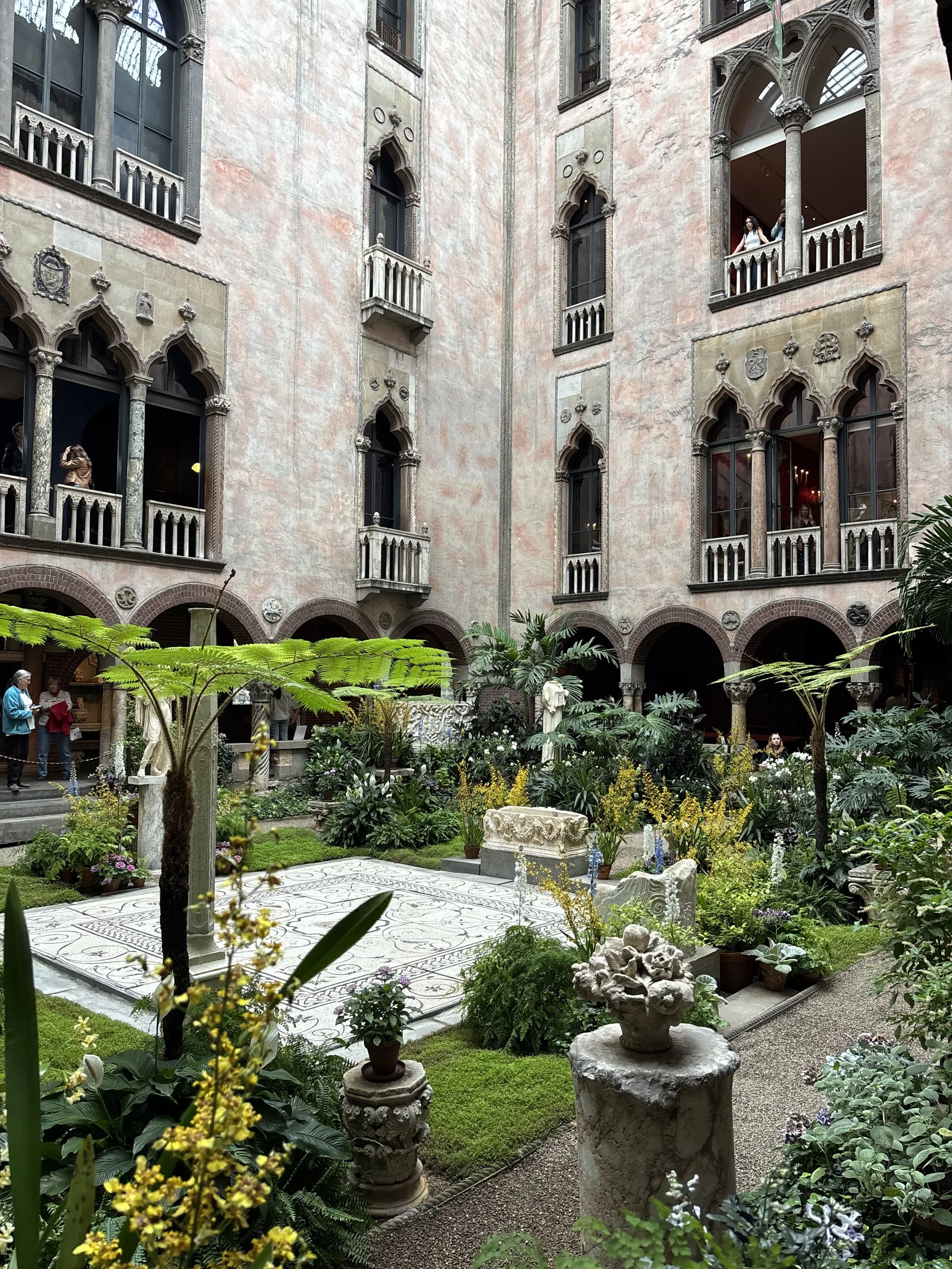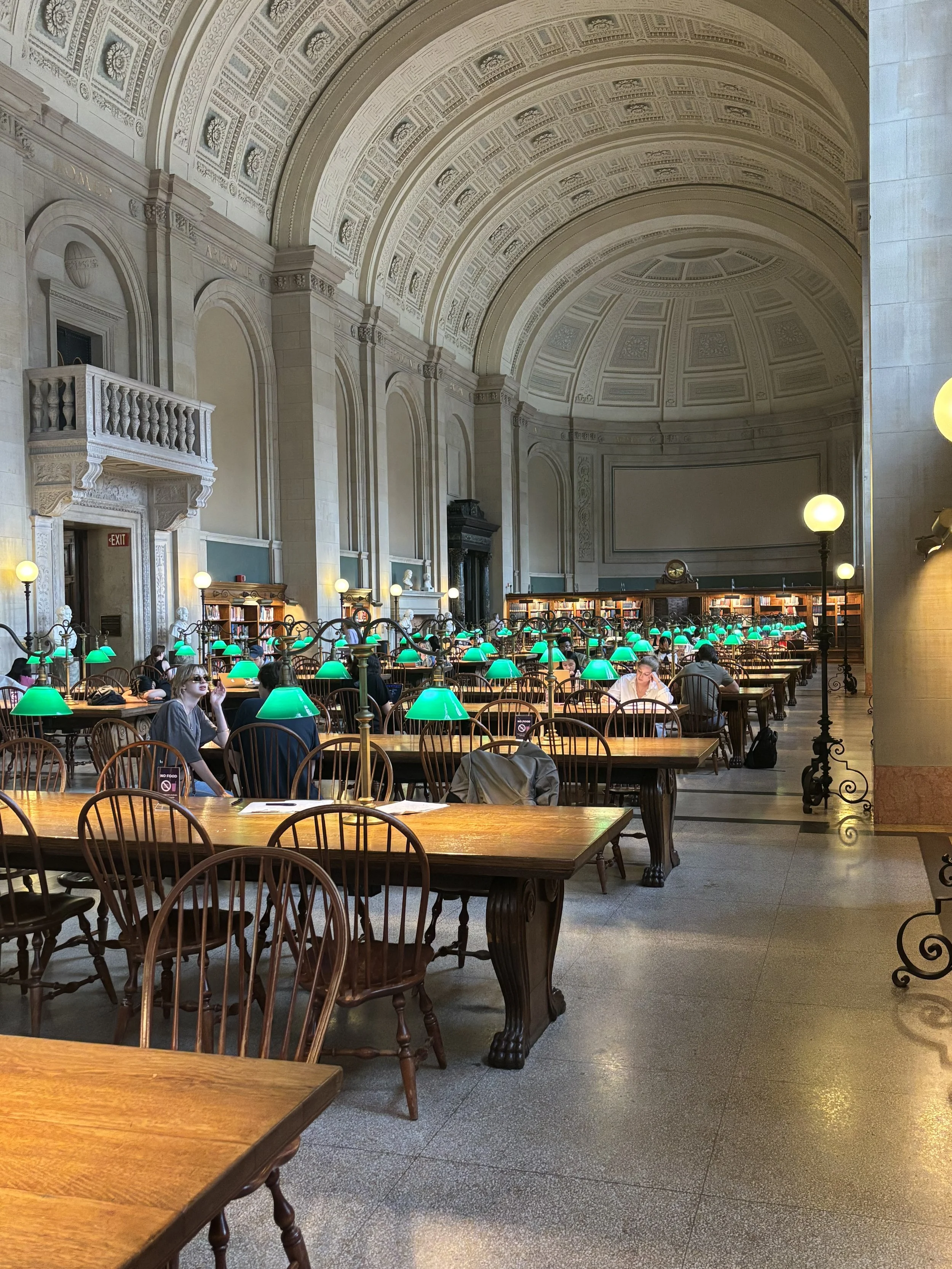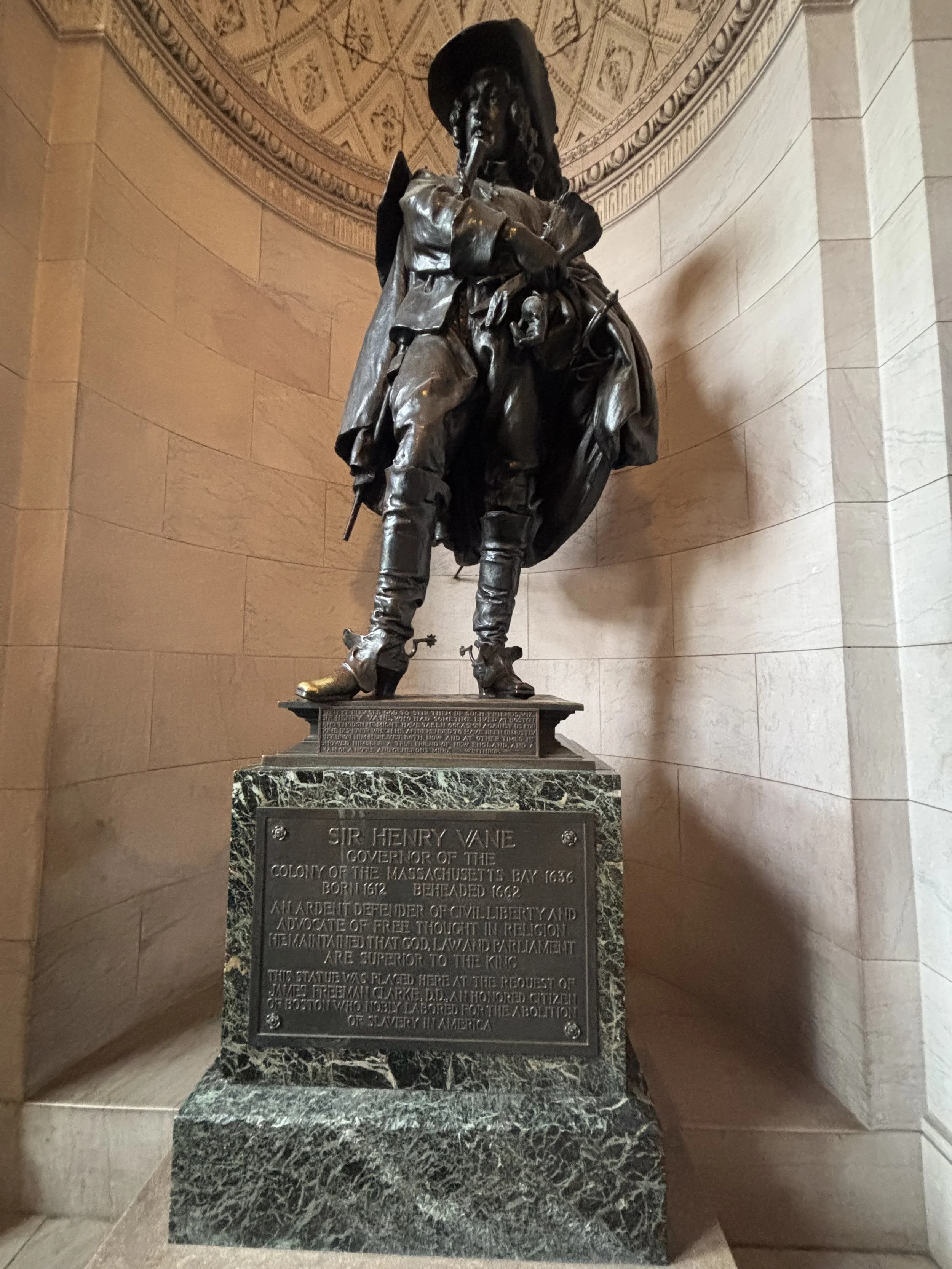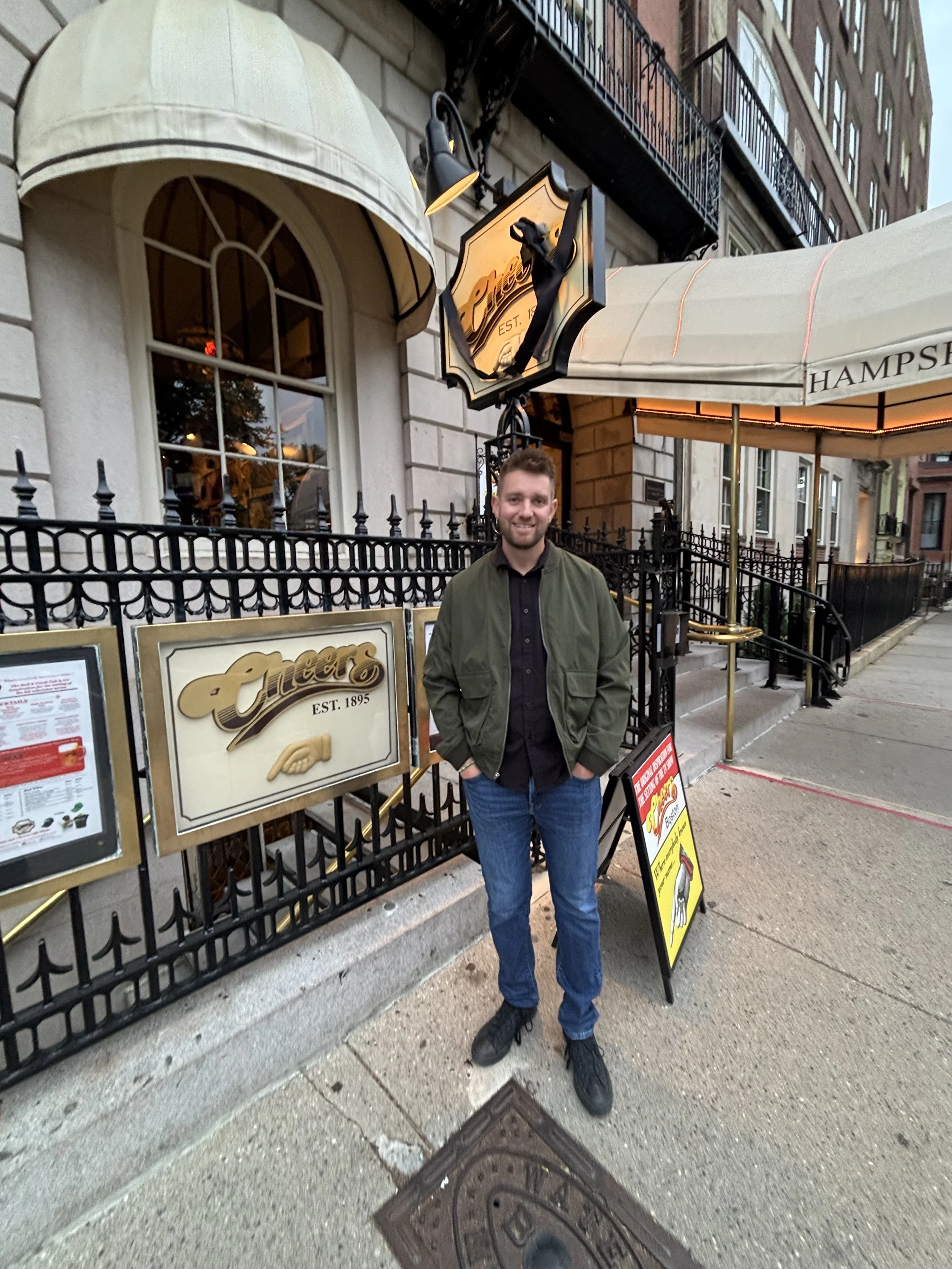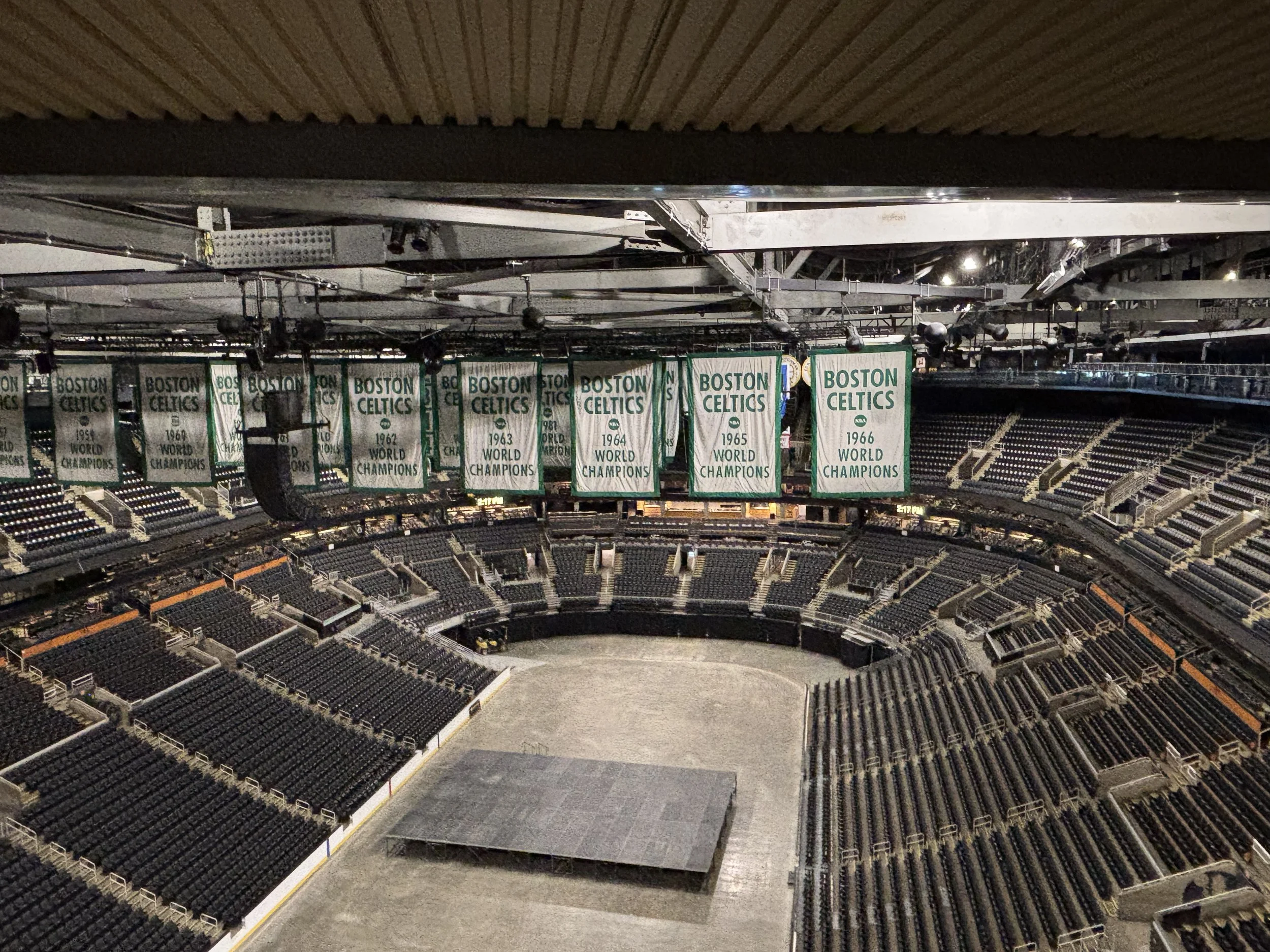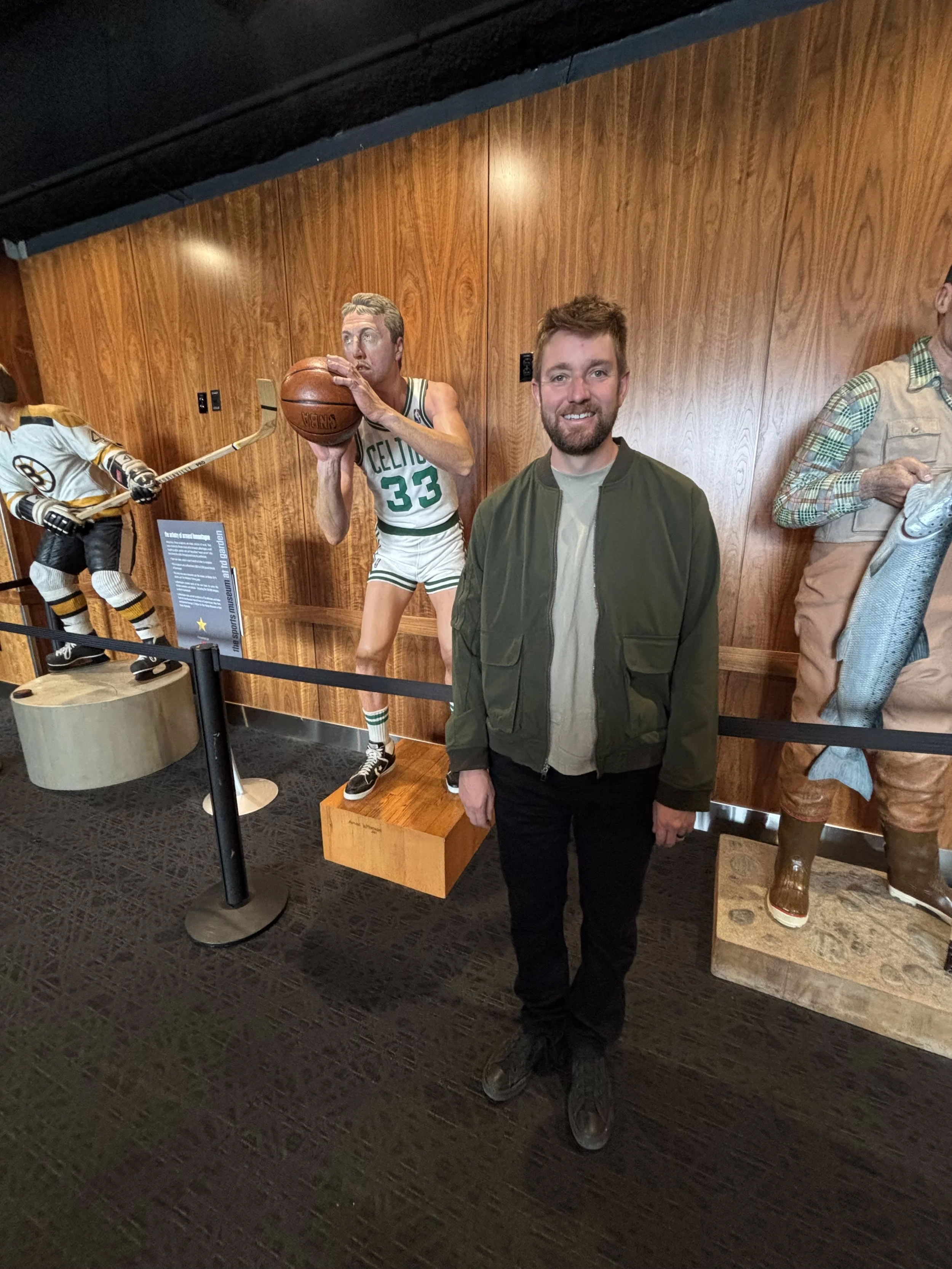Boston
In mid-May, we left Sally with a sitter in Sacramento and boarded a flight to Boston. I had grand plans for Elliott’s birthday. Unfortunately, those plans hinged on the Celtics making it to the Eastern Conference Finals. They did not. So instead of winning the “Best Wife” award, I settled for “Nice Try,” which, depending on the state of Jayson Tatum’s Achilles tendon, may be the best I can hope for next year too.
Basketball heartbreak aside, Boston was wonderful. We were only there for a week, but it managed to elbow its way into the top tier of my favorite places.
The museums in Boston are exceptional. Even the non-museum public spaces like the Boston Public Library feel like museums that forgot to charge admission. The Isabella Stewart Gardner Museum was my favorite, not just for its art, but for its deliciously dramatic backstory.
Isabella Stewart Gardner, born in 1840, was the kind of woman who makes you wonder what you’d do with unlimited money and zero concern for social norms. She was wealthy, eccentric, and seemingly unbothered by the judgment of her peers. She traveled widely, collected art voraciously, and once showed up at the symphony in her favorite Red Sox fan gear, which in Boston society at the time was roughly equivalent to arriving in a bathrobe and roller skates.
‘El Jaleo’ by John Singer Sargent at the Isabella Stewart Gardner Art Museum
John Singer Sargent and Isabella Stewart Gardner were friends (more?!), and Sargent also painted a portrait of Gardner, which was considered scandalous for the time period for its depiction of Gardner’s neckline and direct gaze.
‘Portrait of Madame’ by John Singer Sargent
I have to be honest - I don’t really understand why this portrait of Isabella Stewart Gardner was so scandalous. But good for her anyway.
Isabella and her husband dreamed of building a museum to share their collection, and after his sudden death, she made it happen. The result is a building modeled after a Renaissance palace, filled with masterpieces by Titian, Rembrandt, Botticelli, and others. Isabella lived on site until her death. I always thought I'd have to fulfill my dream of living in a museum in a "Mixed up Files of Mrs. Basil E. Frankweiler" scenario, but being an eccentric millionaire would also do the trick nicely.
The covered courtyard at the Isabella Stewart Gardner Museum
Only the depictions of female figures are positioned to gaze into the courtyard, while the male figures face away. I loved this feminist touch!
When she died, Isabella endowed the museum with funds, but she also laid out strict conditions in her will that made financial flexibility and security upgrades difficult. This may have contributed to the infamous 1990 heist, when two thieves dressed as police officers stole 13 priceless works of art. The case remains unsolved, and the museum still offers a $10 million reward. If you’ve recently come across any of the below pieces art in your attic, now’s the time to speak up. I’d also be happy to team up, investigate, and split the reward!
Boston Public Library
The Boston Public Library also felt magical. Its vast reading rooms are filled with silent students hunched over long tables, while the stairwells and galleries are adorned with murals and architectural flourishes. The John Singer Sargent lobby is lovely, and the Abbey Room features a series of paintings depicting Sir Galahad’s quest for the Holy Grail. I pulled a few fragile pamphlets off a shelf and discovered political proceedings from nearly 200 years ago. It made me wish I had a legitimate academic reason to be there, though I suspect “nosy tourist” is close enough.
Statue of Sir Henry Vane
In the entry of the library, there is a statue of Sir Henry Vane, an English politician who lived in Massachusetts in the 1630s. After exposure to what he felt was religious fakery - he called Puritan ministers "the second beast of Revelation" - he pioneered the concepts of religious freedom and separation of church and state in the colonies.
I didn't know any of this at the time, and the statue only caught my eye because of the inscription on the plaque: "Born 1612, Beheaded 1662". I was hoping for lots of historical drama and was only a little disappointed. You might need a couple doctorate degrees in British history to understand and interpret the context of the events that led to Vane's execution, but he sounded like a decent guy. Maybe someday Hilary Mantel will write a book about him, which I will pretend to read. Those old Brits make today's politics look super tame.
The rest of the plaque reads:
Sir Henry Vane
Governor of the Colony of the Massachusetts Bay 1636
Born 1612 Beheaded 1662
An ardent defender of civil liberty and advocate of free thought in religion. He maintained that God, law, and parliament are superior to the King.
Other highlights from our trip included:
A tour of TD Garden
The Cheers Bar (yes, it’s touristy, but it’s also fun)
A Teddy Swims concert near the racetrack
A Red Sox game
A walk through Harvard’s campus
Elliott outside the Cheers Bar
We stood right next to a plaque on the bar that read “This is Norm’s Seat”. The actor that played Norm had recently passed away, but it was clear the plaque had been there for a long time and was barely legible. If anyone visits in the next few months, let us know if they upgraded it!
TD Garden, after a disappointing season
They wasted no time in pulling up the floor. The stadium is also home of the Boston Bruins.
Elliott and Larry Bird
The “Hick from French Lick” spawned generations of Midwest Celtics fans, including Elliott and his dad.
Celtics Home Court
I got close to take a picture and the tour guide yelled at me. I wasn’t going to to touch it! (OK, I was thinking about touching it.)
Boston’s history is everywhere, and I think it really shapes the community. We stayed in the North End, where firefighters sat in office chairs outside the station chatting with neighbors, and restaurant runners dashed between kitchens and corner shops fetching wine and ingredients. When I popped down to the corner market buy salt for pasta water, the owner was friendly about filling up a small plastic cup of salt for free, but he was stern in his instructions on how to properly prepare fresh pasta and asked that I return and report out. Pasta is a big deal there! Even the streets seemed laid out in the shape of a bowlful of pasta, which made exploration fun.
Street musicians played with the skill of symphony members, and restaurant hosts assured us they could make room at “the bah” if we stopped to examine the posted menu at a busy restaurant. Everyone seemed genuinely happy to have tourists around, which is not something you can say about every city.
If you go to Boston and can afford it, stay in the North End. But do not, under any circumstances, drive. Public transportation is easy, and we tried to pay for it but couldn’t figure out how. No one seemed to care, so I guess it’s functionally free as well.
Elliott and I daydream about living in Boston, but the housing costs are astronomical. Still, if you’re reading this and need reliable house sitters in Boston, we’re available. We’d take scrupulous care of your home and pets!
